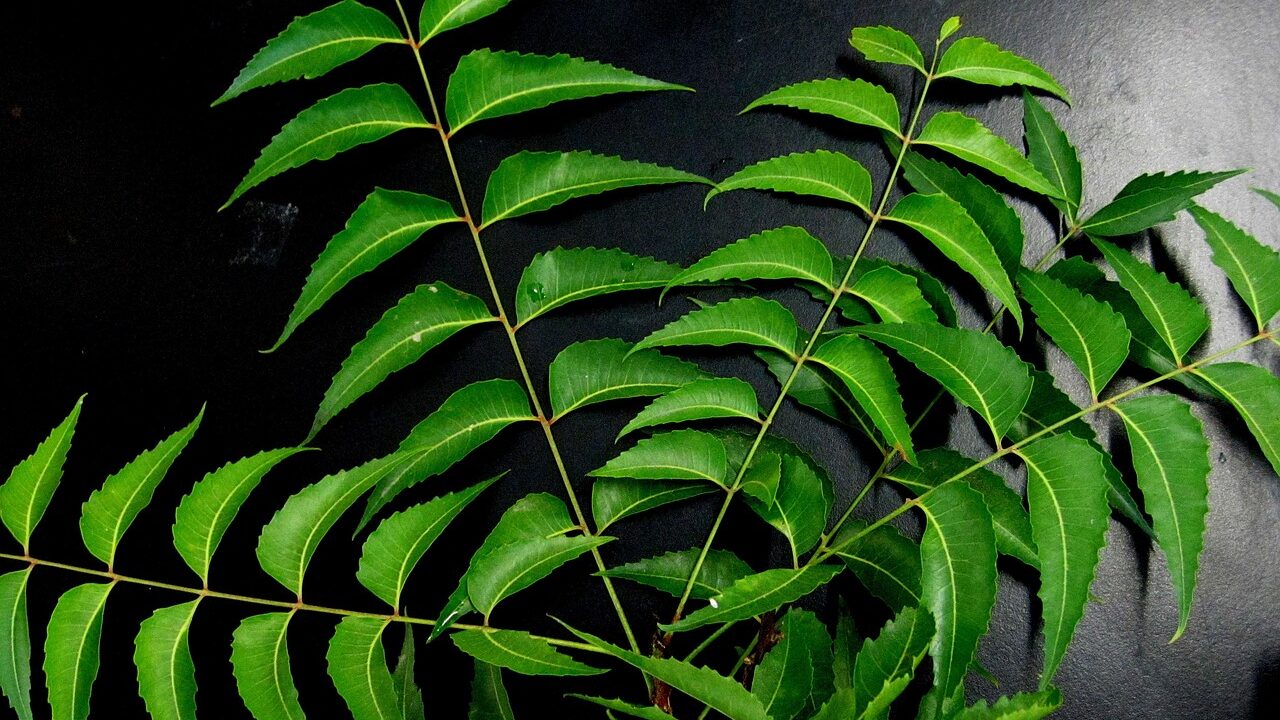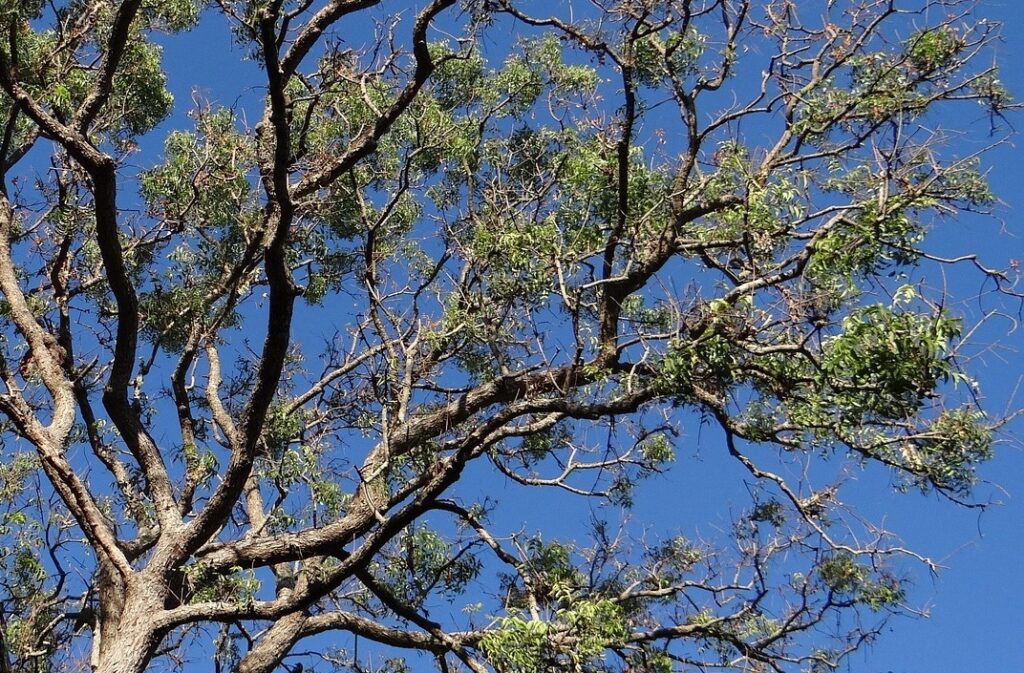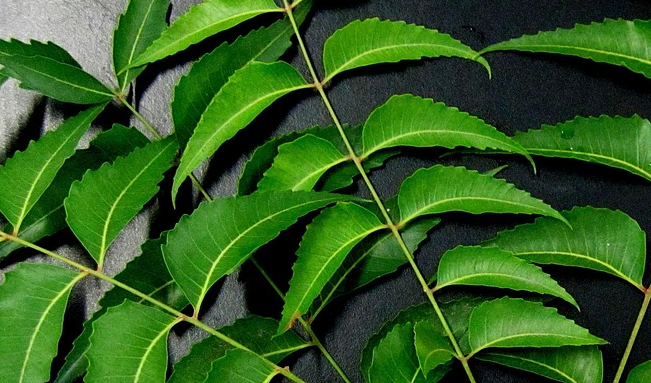-
What is Neem Oil: Is it Safe for Your Garden and Why Expert Gardeners Avoid It
 Lee Burkhill: Award Winning Designer & BBC 1's Garden Rescue Presenters Official Blog
Lee Burkhill: Award Winning Designer & BBC 1's Garden Rescue Presenters Official Blog

The truth about neem oil is far more complex and concerning than the glossy marketing would have you believe.
Whilst it may come from a tree rather than a laboratory, natural doesn’t always mean safe. This comprehensive investigation delves into the less well-known aspects of neem oil, which garden influencers often overlook, and is supported by scientific evidence and regulatory decisions that should prompt every responsible gardener to think twice before reaching for the spray bottle.

This article examines the real story behind neem oil, from its ancient origins in India to its modern regulatory battles, and reveals why an increasing number of professional horticulturists are turning to safer alternatives. If you care about the health of your garden, your family, and the wider environment, this is essential reading before you make your next pest control decision. Obviously, the choice is up to you if you decide to buy neem oil, but at least make an informed choice, like with all weedkillers and pesticides!
This page contains affiliate links (see full details here). If you purchase through these links, I may earn a small commission at no extra cost to you. I only recommend products I personally use and trust at Garden Ninja HQ.
Before diving into the comprehensive analysis of neem oil’s safety concerns, it’s worth noting that this topic has generated considerable discussion amongst Garden Ninja community members. The forum reveals the genuine confusion and mixed experiences that gardeners have with this controversial product. These real-world discussions underscore the need for a thorough examination of neem oil’s safety profile.
Recent forum discussions about neem oil include:
• “What is neem oil?” – A gardener seeking advice about using neem oil for mites on houseplants and aphids on roses, demonstrating the widespread confusion about this product’s safety and efficacy.
• “To dilute or not to dilute neem oil for plants?” – Discussion about proper application methods for Forest Flame plants, showing how gardeners are using neem oil without fully understanding the risks involved.
• “Blight on Euonymus” – Forum post discussing neem oil as one of several treatment options for scale insects, illustrating how it’s often recommended alongside more problematic chemical interventions.
These forum discussions reveal a pattern that’s concerning: gardeners are turning to neem oil based on recommendations from friends and online sources, often without understanding the regulatory restrictions, health risks, or superior alternatives available. The questions being asked demonstrate a lack of awareness about the serious safety concerns that have led to bans across Europe and growing professional reluctance to recommend neem oil.

What’s particularly telling is that even within the Garden Ninja community, there’s inconsistent guidance about neem oil use, reflecting the broader confusion in the gardening world about this product’s true safety profile. This inconsistency highlights precisely why clear, evidence-based information about the risks and alternatives of neem oil is so urgently needed. As I’ve always said on my site and YouTube channel, all your gardening decisions should be based on logic and not guesswork!
Neem oil, also known as margosa oil, is a vegetable oil pressed from the fruits and seeds of the neem tree (Azadirachta indica). Neem oil is indigenous to the Indian subcontinent and has been introduced to many other tropical regions. This evergreen tree, reaching heights of 15-20 metres, has been revered in its native range for over 4,500 years, earning the nickname “the village pharmacy” due to its extensive traditional medicinal uses.
The neem tree belongs to the mahogany family (Meliaceae) and thrives in tropical and subtropical climates. On the Indian subcontinent, the neem tree has been utilised for over 4,500 years, with the earliest documentation mentioning the fruit, seeds, oil, leaves, roots, and bark for their beneficial medicinal properties. Archaeological evidence from the ancient Harappa civilisation shows neem leaves were being gathered for therapeutic purposes around 4,500 years ago. The neem tree belongs to the mahogany family (Meliaceae) and thrives in tropical and subtropical climates.

In Ayurvedic medicine, virtually every part of the neem tree has been utilised. The leaves are used to brew remedial drinks and scattered on beds to treat fevers, diarrhoea, chickenpox, eczema, psoriasis and ulcers. Dried flowers are used to combat infections, while bark and seeds are combined into pastes and applied directly to the skin for their antibacterial, antiviral, antifungal, and anti-inflammatory properties. Whilst I’m all for this, it takes a careful botanist to know the exact amounts to help cure and not poison someone, which is why neem oil sold to the public can cause issues with dosages and the correct application.
The versatility of neem makes it remarkable; even small twigs with the bark peeled back make excellent organic, antiseptic toothbrushes when chewed. Like most plants, neem has a mix of medicinal uses along with its toxins. Remember that nearly all plants are toxic to some degree (usually larger amounts than most people can consume or ingest). Toxic plants should not be feared, but they must be understood.
The modern commercial extraction of neem oil focuses primarily on the seeds, which contain the highest concentration of active compounds. The yellow to brown oil has a bitter taste and distinctive garlic/sulfur smell that makes it immediately recognisable. The most crucial active ingredient is azadirachtin, which occurs at a concentration of 0.2-0.4% in the seeds, acting as a potent insect growth regulator and feeding deterrent.

What many gardeners don’t realise is that the production process significantly affects the oil’s composition and safety profile. Cold-pressed neem oil retains more of the active compounds, including azadirachtin, whilst heat-extracted or chemically processed versions may have reduced potency but also altered toxicity profiles. This variability in production methods contributes to the inconsistent regulatory approaches we see across different countries. Essentially, you’re never entirely sure what you’re getting.
The most telling indicator of neem oil’s controversial status lies in the stark regulatory differences between regions. Whilst the USA continues to permit neem oil use in gardens, the European Union has taken a dramatically different stance, effectively banning its use as a pesticide.
In the UK and EU, plant protection products containing azadirachtin, the active ingredient in neem oil, are prohibited for use as pesticides. The Health and Safety Executive issued Regulatory Update 26/2010, clearly stating that “it is unlawful to place on the market in the UK plant protection products that contain azadirachtin, the active ingredient of neem oil.” This prohibition extends to any products marketed as insect repellents for plant protection purposes.
The European situation became even more restrictive in December 2023, when Azadirachta indica seed extract (neem seed extract) was banned from cosmetic products due to its classification as a CMR (Carcinogenic, Mutagenic, or Toxic to Reproduction) substance. This classification represents a significant escalation in regulatory concern, moving beyond just pesticide use to acknowledge broader safety issues. Showing the potential risks of applying neem oil to human skin, which is the largest risak factor for gardeners mixing it with water to spray on plants!
Yes, though you can still buy it from certain outlets such as Amazon.
Interestingly, whilst the UK currently maintains some differences from EU regulations post-Brexit, experts expect similar cosmetic restrictions to be implemented at a later date. However, the plant protection ban remains firmly in place, with consumer advocacy groups like Which? explicitly warning gardeners that “neem oil is not authorised to be used as a pesticide in the UK as it is hazardous to human health”.
Canada has followed a similar path, with Health Canada and the Pest Management Regulatory Agency (PMRA) refusing to register neem oil as an approved pest control product. The Canadian ban centres on the lack of complete safety evaluations and concerns about toxicity, particularly azadirachtin’s effects on vulnerable populations, including children

In stark contrast, the United States continues to permit the sale and use of neem oil. The EPA permits neem oil in over 100 pesticide products, applied to a wide variety of crops and ornamental plants for insect control. However, even US authorities acknowledge significant safety concerns, with the National Pesticide Information Centre warning that neem oil can cause skin and eye irritation, and that azadirachtin can be “very irritating to the skin and stomach”.
This regulatory schism isn’t arbitrary but reflects fundamentally different approaches to the precautionary principle. European regulators have chosen to err on the side of caution, banning substances where there’s reasonable concern about safety, even if definitive proof of harm isn’t complete. US regulators take a more permissive approach, allowing products to remain available unless there’s conclusive evidence of unacceptable risk.
| Country/Region | Status | Year Implemented | Scope of Ban/Restriction | Regulatory Authority |
|---|---|---|---|---|
| United Kingdom | BANNED | 2010 | Plant protection products containing azadirachtin prohibited for pest control use | Health and Safety Executive (HSE) |
| European Union (27 countries) | BANNED | 2010 (pesticides) 2023 (cosmetics) |
Complete ban on pesticide use; cosmetic products banned due to CMR classification | European Commission |
| Canada | BANNED | Ongoing | Not registered as approved pest control product; illegal to market as pesticide | Health Canada (PMRA) |
| Austria | BANNED | 2019 | First EU country to implement comprehensive neem/glyphosate restrictions | Austrian Federal Ministry |
| Australia | RESTRICTED | 2020s | Regulated as agricultural and veterinary chemical; registration required | Australian Pesticides and Veterinary Medicines Authority (APVMA) |
| New Zealand | RESTRICTED | 2018 | Requires EPA approval for pesticide use; strict application guidelines | Environmental Protection Authority (EPA) |
| United States | LEGAL | N/A | EPA approved for pesticide use with health warnings and application restrictions | Environmental Protection Agency (EPA) |
| India | PARTIAL RESTRICTIONS | 2021 | Export quality controls implemented; domestic use varies by state | Central Insecticides Board & Registration Committee |
| Norway | BANNED | 2015 | Pesticide use prohibited under precautionary principle | Norwegian Food Safety Authority |
| Switzerland | RESTRICTED | 2019 | Requires special authorization; limited approved uses | Federal Office for Agriculture (FOAG) |